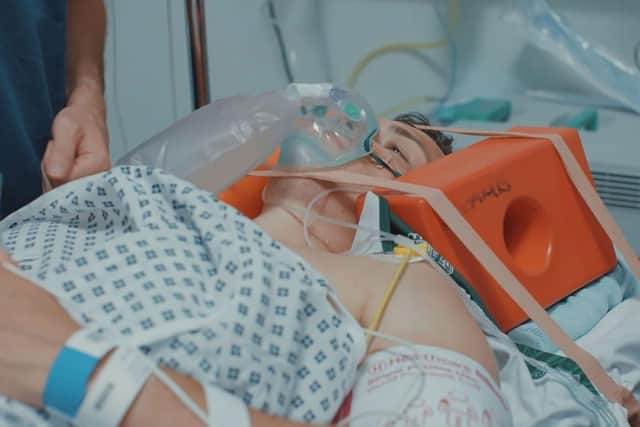Emergency concludes with more life-or-death stories
and live on Freeview channel 276
The first series of Emergency aired in 2022 and introduced many viewers to the work of the London Major Trauma System, a unique network of 39 hospitals made up of four major trauma centres and 35 trauma units, ambulance services and air ambulance services.
Among the medics featured in that initial run was Mr Morgan McMonagle, a Trauma and Vascular Surgeon, who hoped the documentary would give audiences a new appreciation of the NHS.
Advertisement
Hide AdAdvertisement
Hide AdSpeaking about the first four episodes, he said: “It’s easy to highlight deficiencies, but the British public should be very proud of their NHS. All through Covid, despite the challenges and the mask wearing and the stress and strain, the NHS kept going! And why? Because it is populated by great people: doctors, nurses, physiotherapy, occupational therapy, managers, cleaners, security, caterers and of course the patients themselves.”


He added: “When you see us come together in a major trauma situation or a mass casualty, that’s when you see us at our best. I call it ‘Trauma Justice League’.”
As well as coming up with what is arguably a better title for the series (let’s face it, Trauma Justice League is more memorable than Emergency, especially considering the sheer number of fly-on-the-wall medical documentaries on our screens), he summed up why Channel 4 decided to bring the programme back for four more episodes – it highlights some incredible stories, both of dedicated staff and resilient patients.
And the London Major Trauma System is definitely something worth celebrating. Since it was founded in 2010, it has treated over 12,000 people a year, and over the course of five years, it has seen survival rates increase by more than 50 per cent.
Advertisement
Hide AdAdvertisement
Hide AdThe current four-episode series began last week with two instalments, and concludes tonight with more stories exploring the challenges facing the medics as they make life-or-death decisions.
Cameras are stationed at St Mary’s Major Trauma Centre, where staff are treating ex-soldier Joe. He drank half a bottle of vodka at an army reunion, and subsequently tripped and fell down an escalator on his way home. Scans reveal a fractured skull and a small bleed in Joe’s brain.
Meanwhile, 46-year-old Jorge was brought into North Middlesex University Hospital in north London after being found unconscious at home with a lot of bleeding. It’s discovered that he’s broken a bone in his neck and needs a complex operation – but the surgery carries with it a risk of paralysis.
Cameras are also at St George’s in south London, where 20-year-old motorcyclist Daniil has been receiving intensive care after colliding with an HGV. Daniil has been at the hospital for five days, but until he wakes up, the medics won’t know the full extent of his injuries.
The doctors also come to the aid of a 25-year-old rugby player who suffered a severe femur injury after being tackled. Can this version of the Trauma Justice League help to repair the damage?